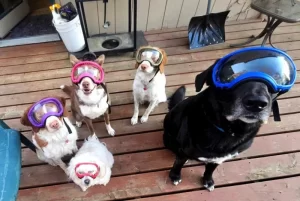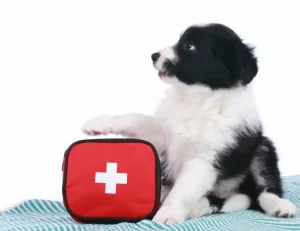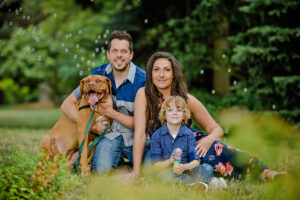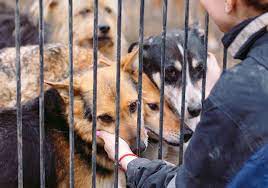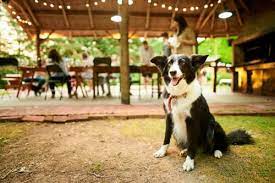Table of Contents
ToggleHow to Transition Your Dog to a New Home Without Stress
Moving to a new home is exciting but can also be stressful, especially for your furry friend. Dogs thrive on routine and familiarity, so a change in environment can shake them up. With a little preparation and patience, you can make the transition smooth and stress-free for your pup. Here’s how to help your dog adapt without overwhelming them.
Prepare Before the Move
Planning is key when transitioning your dog to a new home. Dogs are sensitive to changes in their surroundings, and preparation can set the tone for a calmer experience.
- Pack Their Essentials First: Keep your dog’s favorite toys, bed, blanket, and other personal items in a readily accessible box. Familiar scents can provide comfort during the move. The AKC explains that maintaining consistency with your dog’s favorite items is crucial to reducing anxiety.
- Stick to Your Dog’s Routine: Even amidst the chaos of packing, try to keep mealtime, walks, and potty breaks consistent. Predictability helps your dog feel more secure.
- Introduce the New Space Gradually: Before the official move, consider taking your dog to the new home if possible. Allow them to explore and smell the new environment so it doesn’t feel as foreign on a moving day.
Moving Day Tips
On the day of the move, it’s all about ensuring your dog feels safe and secure amidst the hustle and bustle.
- Secure a Safe Space: Set up a quiet area or room at the new home with your dog’s belongings. This provides them with a safe retreat as you unpack. The smell of familiar items can help them feel more at ease, as suggested by Chewy’s guide.
- Limit Exposure: Consider placing your dog in a separate room or using a dog daycare service during the busiest parts of the move. If you’re exploring this option, you might want to read about the pros and cons of dog daycare to see if it’s suitable for your dog.
- Keep Them Contained: If daycare isn’t an option, use a crate or leash to keep your dog contained and safe during transit or when movers are present.
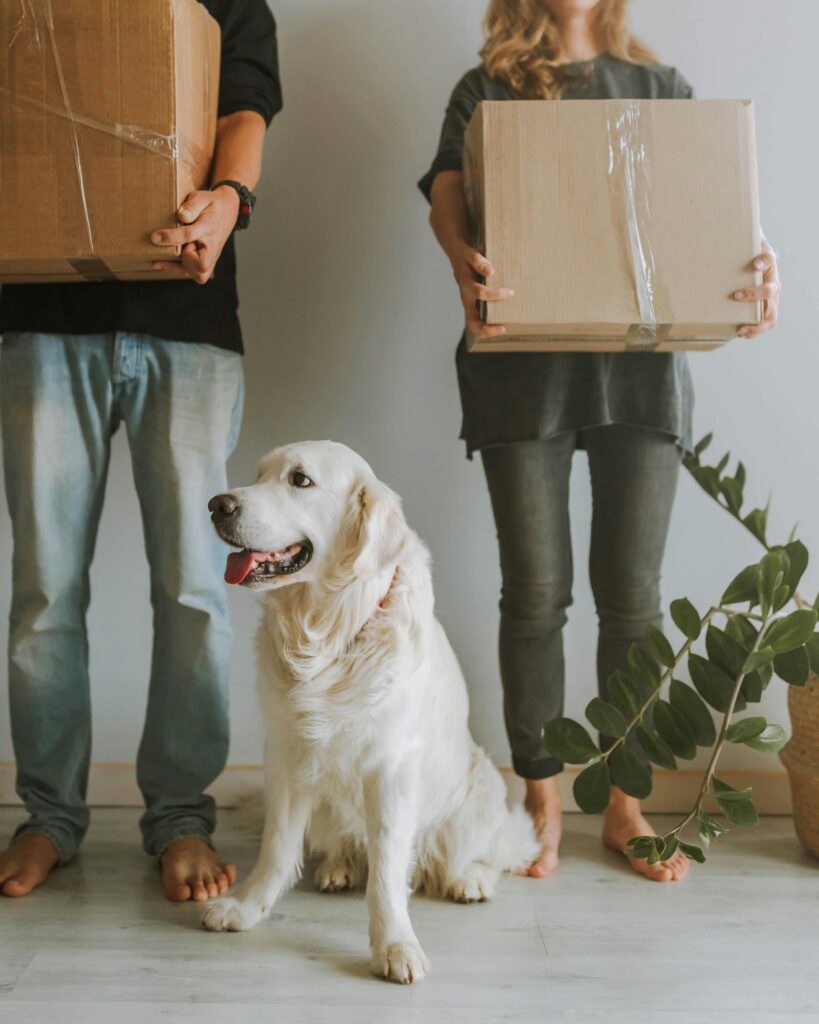
Settling In After the Move
Once you’ve reached your new home, helping your dog adjust becomes your top priority. Settling in requires patience but can make a big difference in their comfort.
- Set Up a Familiar Zone: Place your dog’s bed, blanket, and toys in a designated area to create a sanctuary. Introduce them to this space first before showing them the rest of the house.
- Establish a Routine Immediately: Stick to your dog’s regular schedule to instill a sense of normalcy in the new setting. As Rover explains, this simple consistency reassures your dog that not everything is changing.
- Go for Walks Around the Neighborhood: Help your dog get acquainted with their surroundings by taking frequent walks. This not only burns off nervous energy but also introduces them to the sights and smells of their new environment.
Common Challenges and Solutions
It’s natural for your dog to show signs of stress or anxiety during such a big change. Knowing how to handle these hiccups can make the process smoother.
- Accidents in the House: A sudden change in environment might lead to accidents even in well-trained dogs. Reinforce basic house training, and be patient as your dog relearns the rules in the new home.
- Excessive Barking or Whining: Stress can manifest in vocal behavior. Offer comforting words, and consider providing a calming treat or toy to ease their nerves.
- Loss of Appetite: It’s common for dogs to eat less during stressful times. Keep offering their favorite meals and avoid introducing new foods during the transition.
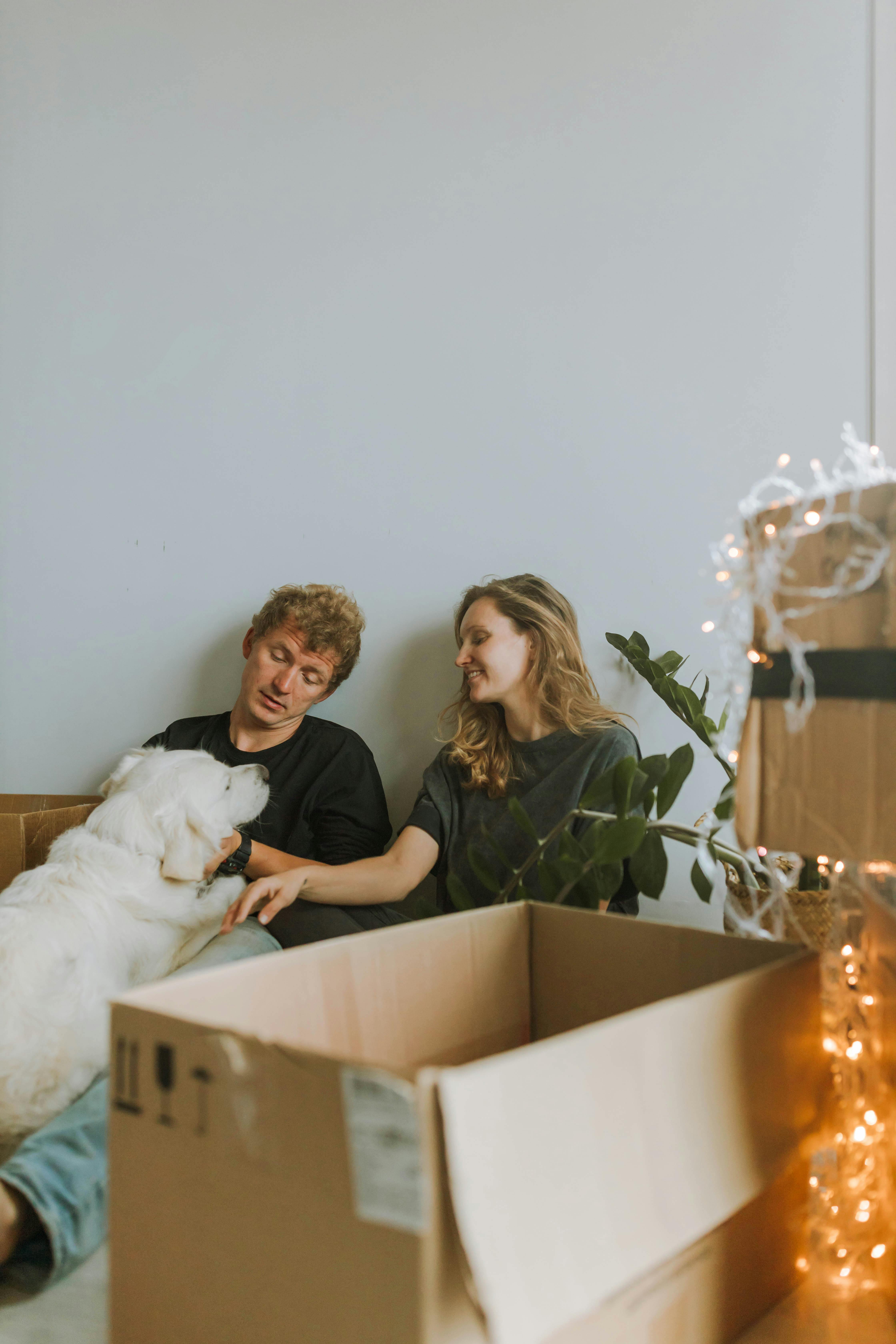
Long-Term Considerations
Transitioning to a new home isn’t just about the first few days—it’s an ongoing process. Pay close attention to your dog’s behavior in the weeks following the move.
- Monitor Behavior Changes: Watch for signs of prolonged stress, such as continued pacing, whining, or destructive behavior. If these persist, consult a veterinarian or professional dog trainer.
- Continue Socialization: If your dog is having difficulty adjusting, socialization might help. Introduce them to other dogs and people in the area to make the new space more familiar and fun.
Conclusion
Helping your dog transition to a new home takes time, patience, and a lot of love. By maintaining routines, providing familiar comforts, and easing them into the new environment, you give your dog the best chance at adjusting happily. Remember, moving isn’t just an adjustment for you—it’s a significant life event for your pet, too. With the right care and attention, your dog will settle in and enjoy their new home just as much as you will.

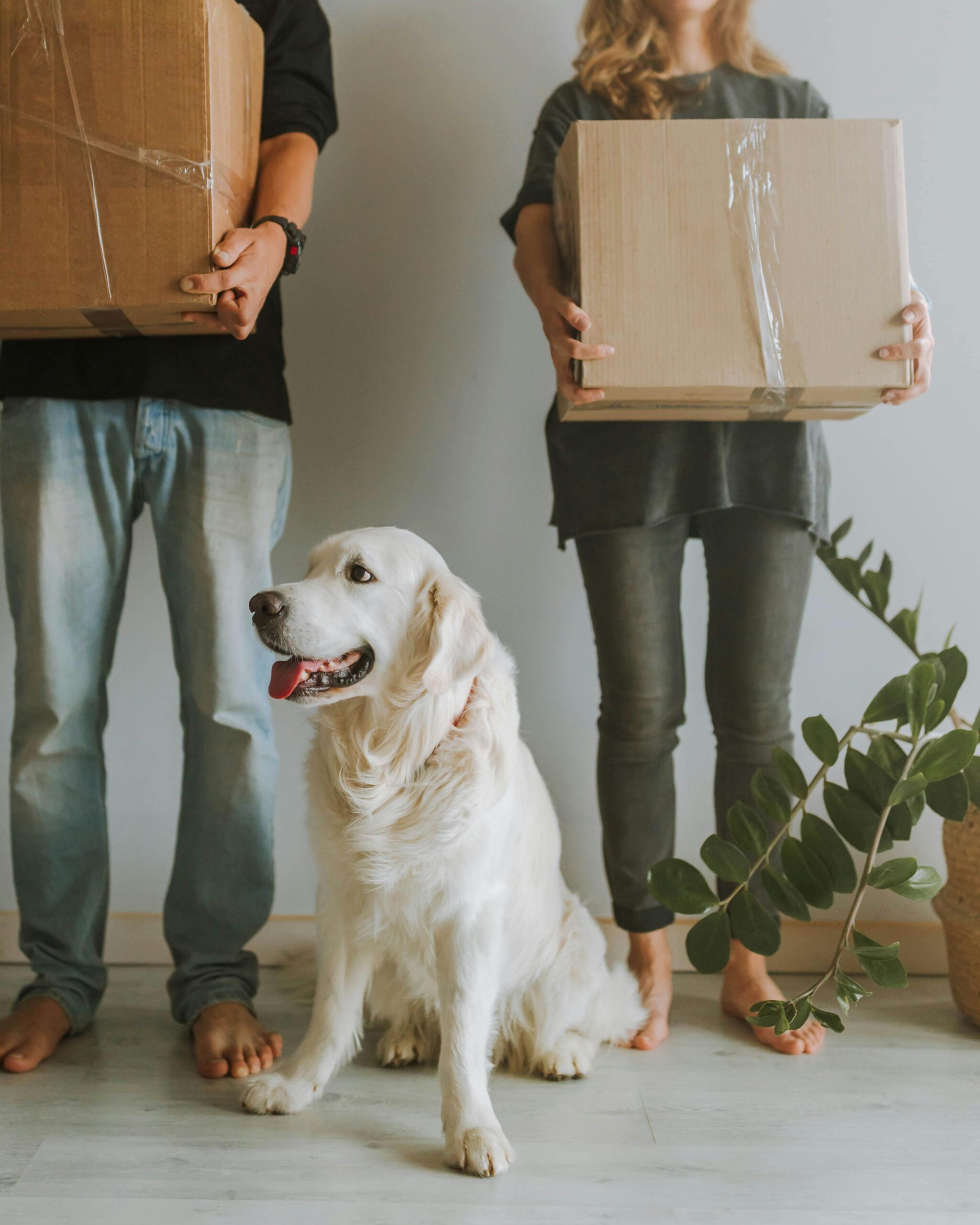
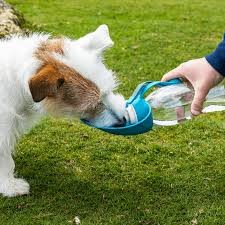







![The Ultimate Guide to Road Tripping with Your Dog [2025 Update]](https://bellabeanupdate.com/wp-content/uploads/2025/05/pexels-photo-1143369-300x209.jpeg)

